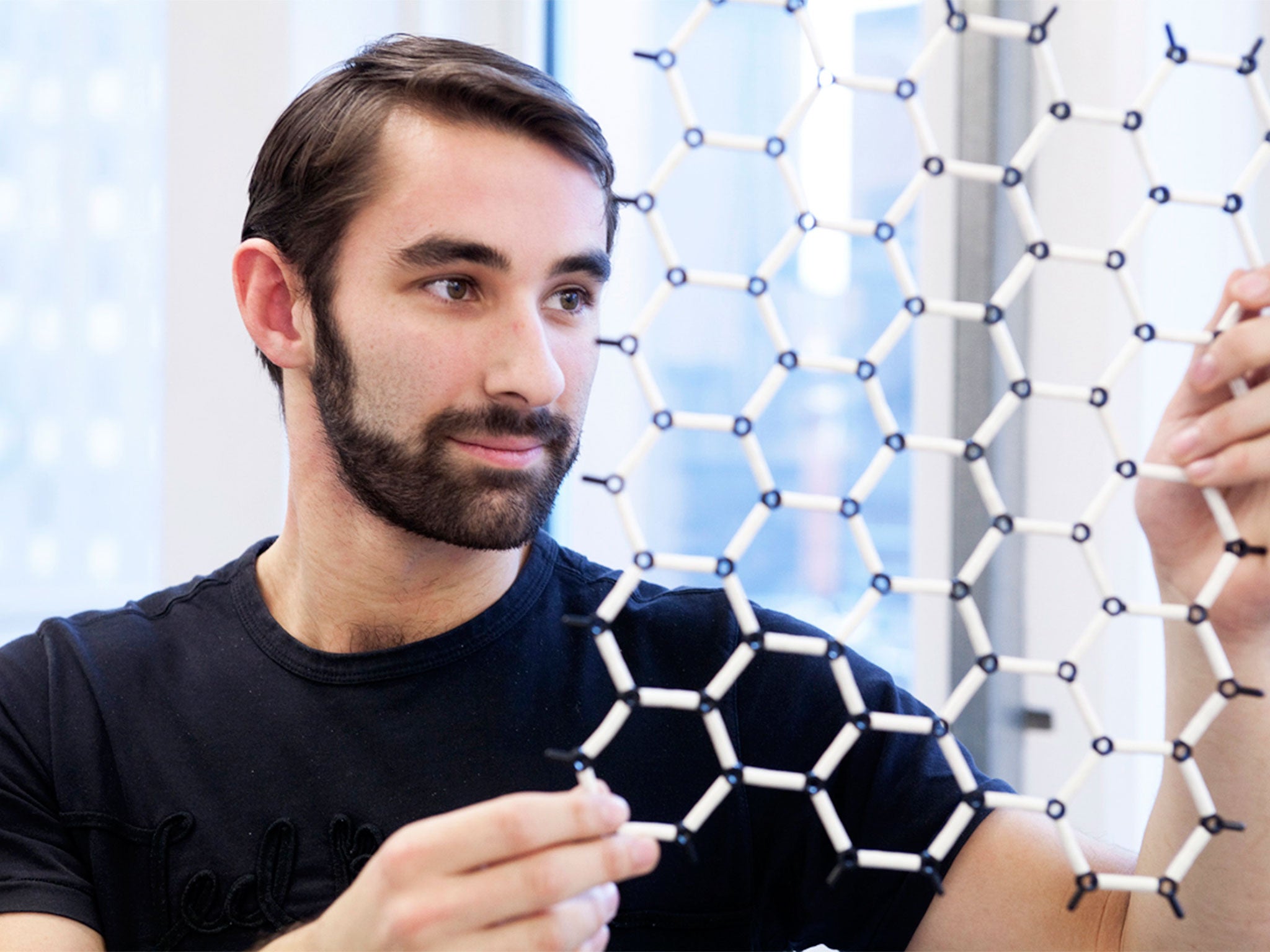Graphene could be used to clean up nuclear waste, say scientists
Previously ‘unthinkable’ uses for wonder material graphene are discovered by scientists

Your support helps us to tell the story
From reproductive rights to climate change to Big Tech, The Independent is on the ground when the story is developing. Whether it's investigating the financials of Elon Musk's pro-Trump PAC or producing our latest documentary, 'The A Word', which shines a light on the American women fighting for reproductive rights, we know how important it is to parse out the facts from the messaging.
At such a critical moment in US history, we need reporters on the ground. Your donation allows us to keep sending journalists to speak to both sides of the story.
The Independent is trusted by Americans across the entire political spectrum. And unlike many other quality news outlets, we choose not to lock Americans out of our reporting and analysis with paywalls. We believe quality journalism should be available to everyone, paid for by those who can afford it.
Your support makes all the difference.Graphene, the thinnest and strongest substance known to science, could be used to help detoxify nuclear waste thanks to the latest discovery involving the wonder material.
Experiments show that it can act as a “super sieve”, able to separate different atomic isotopes of hydrogen, and create the expensive “heavy water” needed by the nuclear industry, researchers said.
This is the first time that graphene – which consists of a crystal lattice of carbon arranged in layers just one atom thick – has been shown to act as a subatomic filter.
The findings could revolutionise the production of the heavy water composed of a rare form of hydrogen called deuterium, which is expensive to manufacture and purify with existing technology.
Graphene could also be used to clean up nuclear waste contaminated with radioactive tritium, another hydrogen isotope that can be separated by the graphene filter, the scientists said. “Essentially, graphene is the finest sieve known. It can sieve particles smaller than an atom. That is not only new but unexpected,” said Marcelo Lozada-Hidalgo of Manchester University, the first author of the study published in the journal Science.
“Acquiring the ability to separate particles smaller than an atom using a membrane at room temperature was unthinkable even to me not long ago. I could imagine applications in biology, nuclear science, chemistry or physics.”
Graphene, which was discovered by Nobel laureates and professors Andre Geim and Kostya Novoselov, at Manchester University in 2004, has already astonished the world of materials science with its range of unusual characteristics, such as its atomic-scale thinness, extreme strength and high electrical conductivity.
Potential industrial applications range from highly flexible electronics that could be worn in clothes or used in fold-up pocket devices, to a new generation of super-fast computers and hyper-efficient solar panels.
The latest study, by a research team led by Professor Geim, discovered another novel property of graphene – its ability to filter the different atomic isotopes of hydrogen, namely tritium and deuterium, from ordinary hydrogen.
The rare form of hydrogen, deuterium, is only present in nature in very small amounts. For every 6,420 hydrogen atoms, there is just one atom of deuterium, and increasing the concentration of deuterium to make the heavy water used as a special coolant in nuclear power plants is energy intensive and expensive.
The Manchester researchers showed, however, that graphene can act as a simple filter by slowing down the movement of deuterium through a membrane made of graphene and its sister material, boron nitride. While ordinary hydrogen atoms passed straight through the sieve, deuterium was effectively blocked.
Tests showed it was possible to separate tritium and deuterium at room temperatures with high efficiency using just a fraction of the energy normally used to make heavy water. This was true even when the scientists “scaled up” the dimensions of the membrane to a few square centimetres.
This demonstrated that the graphene filter could be used for industrial purposes, such as nuclear-waste management or the production of heavy, deuterium-rich water used as a nuclear coolant, the researchers said.
“Tritium is a waste product in many nuclear reactions that needs to be safely removed from the environment. Graphene could do this efficiently. Also, heavy water is needed in nuclear power plants to contain the reactions at the core. Graphene could help to produce it cheaply,” Dr Lozada-Hidalgo told The Independent. “This is really the first membrane shown to distinguish between subatomic particles, all at room temperature. Now that we showed that it is a fully scalable technology, we hope it will quickly find its way to real applications.”
Professor Irina Grigorieva at Manchester, who co-authored the study, said: “We were stunned to see that a membrane can be used to separate subatomic particles. It is a really simple set up. We hope to see applications of these filters not only in analytical and chemical-tracing technologies, but also in helping to clean nuclear waste.”
Join our commenting forum
Join thought-provoking conversations, follow other Independent readers and see their replies
Comments